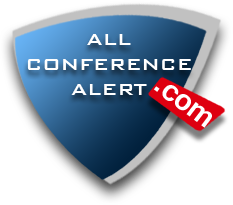The Use of Two-Tier Diagnostic Test to Explore Environmental Literacy
Teerada Longsiri, Srinakharinwirot University (Thailand)
Chanyah Dahsah, Srinakharinwirot University (Thailand)
Supika Vanitchung, Srinakharinwirot University (Thailand)
Manat Boonprakob, Srinakharinwirot University (Thailand)
Abstract
The environmental issues become more serious everyday. Development of an environmental literacy citizen is the way to solve environmental problem efficiently and sustainability. Environmental education has an essential role as a tool for developing environmental literacy both formal and informal context. Since environmental literacy consists of two dimensions, environmental knowledge and environmental ethics, measuring environmental literacy has remained elusive. Multiple choice tests and rating scale questionnaires are commonly used, but both instrument were limited reliability since multiple choice test are encouraged for guessing, and rating scale frequently people avoid choosing the extremes options on the scale. This study developed a two-tier diagnostic test as an instrument that aimed to accurately measures two dimensions of environmental literacy. The test consists of 22 items of environmental knowledge and 10 items of environmental ethics. The instrument was evaluated by three experts and tested with 121 middle school students. The test reliability is .667. The finding revealed that the students were at the moderate level of environmental literacy (16.82 out of 32), environmental knowledge (9.62 out of 22), and environmental ethics (7.20 out of 10). The statistical analysis of Pearson’s correlation between knowledge and ethics suggested a weak positive correlation (.378).
Keyword: Environmental literacy, Two-tier diagnostic test, Environmental knowledge, environmental ethics.
References:
[1] Roth, C.E.,“Environmental Literacy: Its Roots, Evolution and Directions in the 1990s”, ERIC Clearinghouse for Science, Mathematics, and Environmental Education, Ohio, 1992.
[2] Loubser, C.P. et al., “Concept Formulation for Environmental Literacy”, South African Journal of Education, 2001, 317-323.
[3] North American Association for Environmental Education (NAAEE)., “Excellence in environmental education—guidelines for learning (K–12)”, Washington, DC, 2010, [online] available from http://eelinked.naaee.net/n/guidelines/posts/Excellence-in-Environmental-Education-Guidelines-for-Learning-K-12. [accessed 27 June 2015]
[4] Negev, M. et al., “Evaluating the environmental literacy of Israeli elementary and high school students”, The Journal of Environmental Education, 2008. 3-20.
[5] McBeth, B. et al., “National environmental literacy assessment project: Year 1, national baseline study of middle grades students”, 2008, [online] available from http://www.oesd.noaa.gov/NAEE Report/. [accessed 14 April 2015]
[6] Erdogan, M., “Fifth grade students’ environmental literacy and the factors affecting students’ environmentally responsible behaviors”, Dissertation, Ph.D. (Department of Educational Sciences), Ankara: Graduate school middle east technical university, 2009.
[7] Mark, G.H. & William. L.K., “Muitiple–choice test and student understanding: what is the conncetion?”, Decosion Science Journal of Innovative Education, 2005, 73-97.
[8] Wakita, T. et al., “Psychological distance between categories in the Likert scale: Comparing different numbers of options”, Educational and Psychological Measurement, 2012, 533-546.
[9] UNESCO., “Educational Frameworks for Environmental Ethics”, 2012, [online] avaliable from http://www.unescobkk.org/fileadmin/user_upload/shs/Energyethics/ECCAPWG11rpt.pdf [accessed 12 March 2013]
[10] Roth, C.E., “Benchmark on the way to environmental literacy K-12”. Secretary’s Advisory Group on Environmental Education, Colorado, Massachusetts, 1996.
[11] Hollweg, K.S. et al., “Developing a framework for assessing environmental literacy”, North American Association for Environmental Education, Washington, DC, 2011.
[12] Thompson, S.C. & Barton, M.A., “Ecocentric and anthropocentric attitudes toward the Environment”, Journal of Environmental Psychology, 1994, 149-157.
[13] Chu, H.N. et al., “Korean students’ environmental viteracy and variables affecting environmental literacy”, Proceedings of the 2006 Conference of the Australian Association of Environmental Education, 2005, 306-315.
[14] Maulidya, et al., “Case study the environmental literacy of fast learner middle school students in Indonesia”, International Journal of Science and Research (IJSR), 2014, 193-197.
[15] The Partnership for 21st Century Learning., “P21 Framework Definitions”, 2015, [online] avaliable from http://www.p21.org/storage/documents/docs/P21_Framework_Definitions_New_Logo_ 2015.pdf. [accessed 12 July 2015]
 New Perspectives in Science Education
New Perspectives in Science Education


























